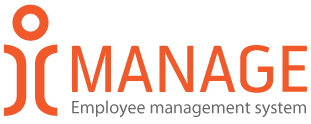iManage hub
Easy to understand articles about perfomance & employee management system
Benefits of an Employee management system
Each company, as well as every management system, are different, so the goals that our clients had, and benefits that they achieved, were very different too. The purpose of this text is to show how some companies use the system and also to share some experience of the benefits that came from it.

By Ivan Marković | HR, Organisational development, Fun, Management, Benefits |
Each company, as well as every management system, are different, so the goals that our clients had, and benefits that they achieved, were very different too. The purpose of this text is to show how some companies use the system and also to share some experience of the benefits that came from it.
The first thing that depends on the benefits that one company is going to get is how much the processes have been standardized at the first place. For example, entrepreneurial companies that are trying to formalize established business model, as well as rapidly growing or companies with expected growth, first and foremost get benefit from standardizing management and establishing better control of workload and workflow. This allows them to keep their products or services at the same level as it was before, as well as to continually increase the number of customers. The management system itself will not increase the number of customers, but will allow companies to continue to work in a recognizable way. As this is one of the most common reasons for small businesses to fail while transforming into mid-sized company, this benefit is often invaluable. Also, the implementation of such systems enables productivity not to fail, to keep the number of errors at a similar level (or to reduce), and to implement some brand new processes that the company needs to have. In companies like this, the employee management system is practically a framework which will allow for company to focus on growth. Simply put, at this stage of company development, without stable employee management system further growth will be significantly more difficult.
When it comes to large well-organized and developed companies, that have defined work standards, the benefits will more often come from the easier achievement of strategic goals, better resource utilization, more efficient workflow control, more consistent time and people managment and better employee motivation. It should not be forgotten that the employee management system actually improves the knowledge of the employees and actually makes the training system more effective and more economical. In larger organizations, the benefits are mainly derived from the fact that such systems are built in-house, some even in departments that are not competent enough and that there is generally proper interconnection between them. That is why most departments cannot make decisions based on multiple indicators, but only on the information they have or directly require. The employee management system therefore connects the existing ones, and with the development of a few additional subsystems, it enables companies, executive management and owners to make better decisions based on accurate data as well as making possible for company to align easier with the desired goals.
The third group consists of companies that are doing generally well, but want some parts of their business to upgrade or to make more resilient through a certain management process formalization. They often set goals in order to better utilize existing resources, set up a work control system, job tracking systems, constant employee development as well as general improvement of executive’s competencies.
What everyone have in common is that the employee management system allows a very precise weak points identification and from that side it can be preventative and eliminate losses. One of the common effects is also a general increase of employee’s motivation, which comes from a variety of reasons.
Increasing overall workload or generating better results are not always goals by themselves. Because, once the benefits come from increasing quality, and sometimes additional flexibility that the company now has, so it does not have to reject some clients, company can increase quality of work with overall reduction in the resource usage. The conclusion is that, in order for the company to have the most benefits, it is necessary to start developing such a system through a clear understanding of what it wants to improve in order to achieve better results.
Based on this, professional analyses that will define optimal number of subsystems, as well as connections between them, are strongly recommended. In this kind of business, simpler well-connected systems will often yield better results than something that is complicated and difficult to apply. The key to success here is in adapting to the needs and the current situation, with minimal usage of both time and resources. In this way, system will achieve goals that you as a company want.
Leave a comment - Be a part of community :)
Just iManage it
iManage is proven Employee Management System. It’s a reliable support service that has been evolving for 15 years. So all of us understand our mission clearly, to help management to reach their goals.
And we just get it done!
About iManage Hub
Interesting articles and analyses written by community of professionals about management, performance, educations and HR in general. In-depth explanations, points of view and real life stories, that will be useful and easy to understand by anyone, from owners and senior management to someone who is at start of serious professional career.
About iManage support
iManage is employee management and support suite that will provide organisation with systems, precise information and guidelines necessary for optimal employee management and results. Find out more




